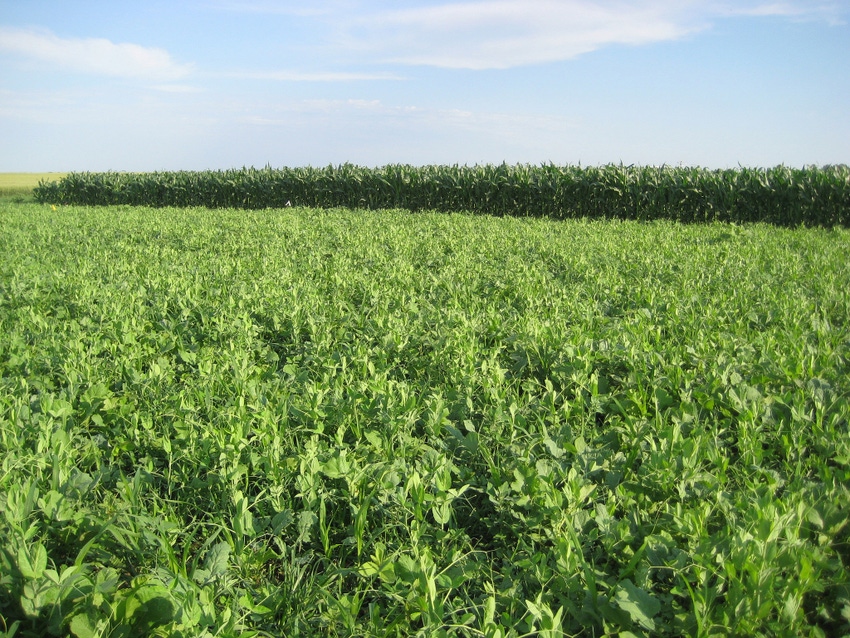April 27, 2017

Even though planting season has not yet started in full force, many fields across Iowa are already turning green. These fields were planted to cover crops last fall with the goal of reducing soil erosion and taking up excess nitrogen.
Reducing erosion is an important step in improving Iowa’s water quality. Planting cover crops is a proven and practical way to help reduce the loss of nitrogen and phosphorus into the state’s waterways.
“Cover crops work by adding a growing plant during typically brown months (November to April) in a corn-soybean rotation,” said Liz Juchems, events coordinator with the Iowa Learning Farms. “Soil is most susceptible to nutrient loss and the root systems of cover crops help keep the soil, and consequently their nutrients, in place during that part of the year.”
Planting cover crops – most commonly oats and winter cereal rye – adds organic matter back into the soil, utilizes residual nitrogen and reduces erosion. A reduction in erosion means lower levels of phosphorus are lost from that soil while retaining nitrogen in plant biomass, making this practice one of the few that addresses both nutrients of concern.
The Iowa Learning Farms, as part of the Iowa Cover Crop Working Group, has spent the last eight years studying the impact of winter cereal rye on corn and soybean yields as well as their impact on soil health. This study has shown that when properly managed, cereal rye cover crops added to a corn-soybean rotation have had little to no negative effect on yield and actually increased soybean yields in seven site-years and corn yield in two-site-years.
While cover crops are mostly yield neutral, they are proven to limit erosion which helps retain soil nutrients, keeping Iowa’s fertile topsoil in place. According to an Iowa Learning Farms study, for each ton of soil kept in place through conservation practices like cover crops, $6.06 can be credited to that practice and help offset the cost of implementation.
Based on the Iowa Learning Farms 2016 Field Day Evaluation Report, an estimated 620,000 acres of cover crops were planted in Iowa in 2016, a massive jump from fewer than 10,000 acres in 2009. One reason for that increase is greater use by livestock producers who have seen the value of also using cover crops as a food source for their livestock.
“Economically, cover crops in livestock operations provide the quickest return on the investment,” Juchems said. “It is a great way to provide rest for permanent pastures and still provide a forage crop while not having to take acres away from corn and soybean production.”
Timing for terminating cover crops
For row crop farmers who are already using cover crops, the time for terminating those crops is quickly approaching. It is recommended that cover crops be terminated 10-14 days ahead of planting corn and 1-2 days before planting soybeans.
“Even with that close turnaround directly before planting soybeans, our collaborator’s studies have shown a delayed termination of rye has no impact on yields,” Juchems said.
The Iowa Learning Farms is committed to informing farmers on the benefits of this practice, holding 30 field days on the topic during 2016. More 2017 field days are planned; the current schedule is available on the ILF website www.Iowalearningfarms.org/page/events.
You May Also Like




